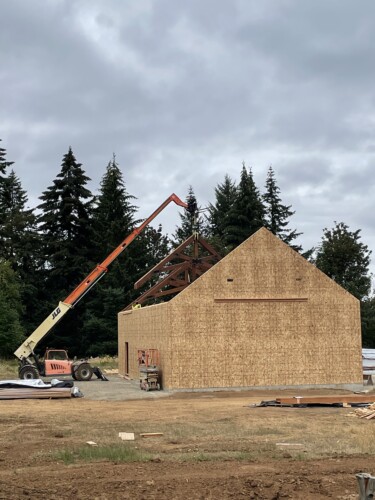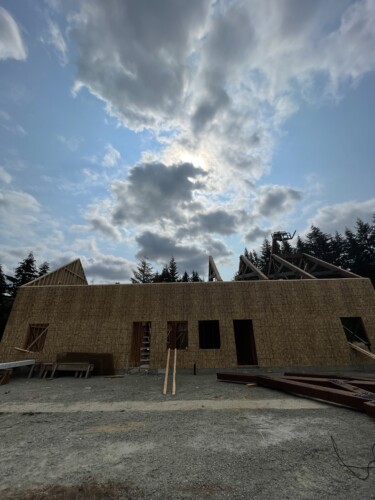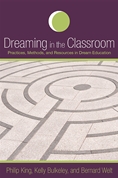 Like many dream researchers I periodically receive emails from high school students asking for help with a class essay or project. It’s fun to think of the best, clearest, most useful ways of responding to these requests. I’d like to believe that the work I and all my colleagues in dream research are doing can at some level be explained in terms that make sense to a curious teenager. That means offering short, direct, non-technical answers. The questions students ask tend to be very broad, and a complete answer to some of them would require writing a whole book—not a practical way to respond either for me or the student.
Like many dream researchers I periodically receive emails from high school students asking for help with a class essay or project. It’s fun to think of the best, clearest, most useful ways of responding to these requests. I’d like to believe that the work I and all my colleagues in dream research are doing can at some level be explained in terms that make sense to a curious teenager. That means offering short, direct, non-technical answers. The questions students ask tend to be very broad, and a complete answer to some of them would require writing a whole book—not a practical way to respond either for me or the student.
Here is a recent exchange I had with a high school student, R.L., who agreed to let me post our emails to each other. I liked the way R.L. covered so much ground with these brief questions, and I took it as a challenge to answer in the most concise language I could manage.
Plus, I was impressed by R.L.’s audacity in sending me this request on December 9, two days before the essay was due!
Dear Dr. Bulkeley,
My name is R.L. I am a freshman at The ___ School in ___, Alabama. I have an essay assignment and I have chosen REM sleep and dreams. I was hoping you could offer some insight on this subject. Will you please answer the following questions?
1.What\’s the percentage of people that have nightmares?
2. Do we stop having dreams at a certain age?
3. Does everyone dream?
4. Can dreams be in color?
5. How can I remember my dreams, or improve my memory?
6. Can you sometimes control your own dreams, by what you do in real life?
7. What does it mean if I see people that are close to me, in my dreams?
8. Can dreams sometimes predict the future?
9. When a person has deja vu, could this be caused by remembering an earlier dream?
10. Is having continuous nightmares normal?
11. When we dream is it usually to express feelings we may be having on the inside, is there any other reason we may have dreams?
12. What is the average number of dreams a person may have a night?
13. When we dream, can the dream take away that conscious feeling we may be having on the inside?
This assignment is due December 11,2013. Thank you for your time and help.
Sincerely,
R.L.
[My response:]
Dear R.L.,
1. It’s pretty small, but more children and adolescents have nightmares than adults.
2. People recall fewer dreams the older they get, but that just might be because they stop paying attention.
3. Yes, in the sense that everyone’s brain is very active every night you sleep. You may not remember dreaming, but you were!
4. Yes, all the time.
5. Often it’s just a matter of deciding before you go to sleep that you’d like to remember a dream when you wake up.
6. Somewhat; it’s more like, whatever you really care about in waking life, you’ll probably dream about it at night.
7. It’s a sign of their emotional importance in your life, like a mirror of your relationships.
8. Dreams can anticipate possibilities that may turn out to actually happen.
9. Definitely!
10. No, I’d definitely talk to a doctor or mental health professional if I were having continuous nightmares.
11. My shortest definition of dreaming is “imaginative play in sleep,” so I think of dreams as a way our minds play during the night. We dream for the same reason children play–because it’s fun and engrossing and endlessly creative.
12. It’s hard to count! Some people have 4-5 a night, that’s a lot.
13. I don’t think take that feeling away, so much as expand our sense of who we are and what is possible in the world.
I hope that’s helpful! Good luck,
Kelly
 Construction is going well so far on the Dream Library, a stand-alone structure on a rural, forested property near Portland, Oregon. As many friends and colleagues know, the project has taken a long time to reach this stage, but at last it’s beginning to take actual shape. The building will provide a long-term archive for dream-related materials such as journals, books, and art. The journal & book collections of Jeremy Taylor and Patricia Garfield will form the core of the library, along with other donated materials and my own collections.
Construction is going well so far on the Dream Library, a stand-alone structure on a rural, forested property near Portland, Oregon. As many friends and colleagues know, the project has taken a long time to reach this stage, but at last it’s beginning to take actual shape. The building will provide a long-term archive for dream-related materials such as journals, books, and art. The journal & book collections of Jeremy Taylor and Patricia Garfield will form the core of the library, along with other donated materials and my own collections.




 A new study explores the demographic variables that correlate with positive vs. negative attitudes towards dreams.
A new study explores the demographic variables that correlate with positive vs. negative attitudes towards dreams.


